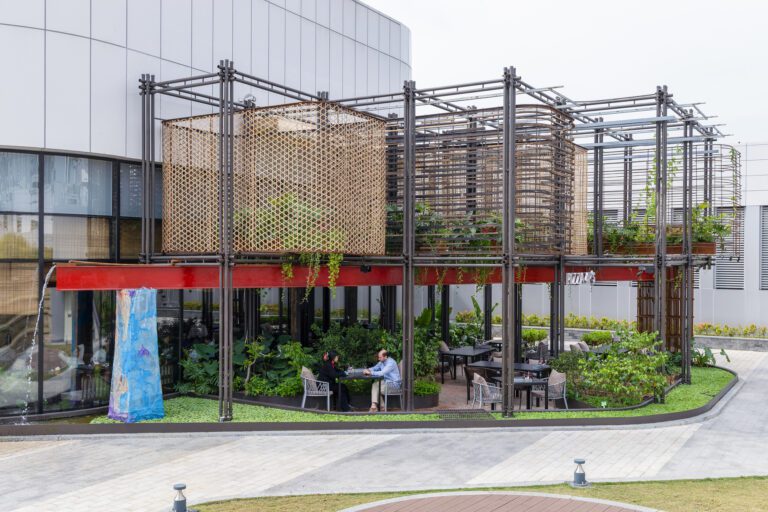





- Space:
400 m²
12 months:
2023

Textual content description offered by the architects. The architectural design of Pizza 4P’s restaurant challenge exemplifies a fusion of conventional craftsmanship, trendy design, and sustainability rules inside the context of Hanoi’s quickly evolving panorama. The designer’s purpose was to create a stimulating expertise as a deal with for all senses. Following are some key features considered whereas guaranteeing the latter:



Steadiness between formality and informality: The design efficiently navigates the distinction between the formal setting of the shopping center and the casual character of Hanoi’s streetscape. By embracing each conventional components and trendy development practices, the restaurant creates a harmonious mix of ritual and informality that displays the town’s various cultural panorama.

Spatial Variety: The restaurant’s inside options various spatial configurations, together with various ceiling heights and lighting circumstances. This creates a dynamic and interesting environment for patrons, permitting them to discover totally different seating choices and experiences inside the area.



Native Craftmanship: The challenge integrates supplies and methods sourced from Hanoi’s craft villages, showcasing the town’s wealthy cultural heritage. By incorporating rattan, bamboo, and recycled supplies, the design pays homage to conventional artisanal abilities whereas adapting them to modern tastes.



Native Artist and Paintings: Native artists Ms. Kim Vu Thu and Mr. Phuong Gio contribute dynamic and colourful paintings created from recycled supplies, including a novel aptitude to the restaurant’s ambiance. These artistic endeavors are designed completely for the restaurant, utilizing recycled plastic baggage and conventional Do paper. These artworks not solely function aesthetic focal factors but in addition reinforce the dedication to sustainability via their use of repurposed supplies.


Sustainable Follow and Resourcefulness: The deliberate patchwork of supplies sends a robust message concerning the potential for worth creation via recycling and accountable consumption. By showcasing the sweetness and utility of repurposed supplies, the design encourages patrons to rethink their very own consumption habits and environmental impression. The design prioritizes sustainability by repurposing supplies from development waste and different Pizza 4P’s eating places. The floor of the ground is constructed by combining varied recycled supplies from development waste, corresponding to rubble and damaged terracotta tiles. The lighting and paintings design makes use of repurposed plastic baggage, function/partition partitions, and previous glass bottles from the restaurant. Recycled wooden and metal are additionally used to make ceiling frames and partitions. This strategy not solely reduces environmental impression but in addition imbues the area with a way of authenticity and resourcefulness.

Integration of Nature: The boundaries of the skin area are outlined by the water surfaces and the aquaponic system, which feeds each outside and indoor vegetation, in addition to greens for restaurant use. This technique helps enhance the cooling capability of the area, and likewise provides it instructional values, offering experiences and understanding about nature. The aquaponic system enhances the restaurant’s sustainability credentials whereas contributing to a cooler and extra inviting outside surroundings.

Total, the Pizza 4P’s restaurant challenge serves as a compelling instance of how architectural design cannot solely fulfill purposeful necessities but in addition interact the senses, rejoice native tradition, and promote sustainability- specifically inside a quickly evolving city context.



